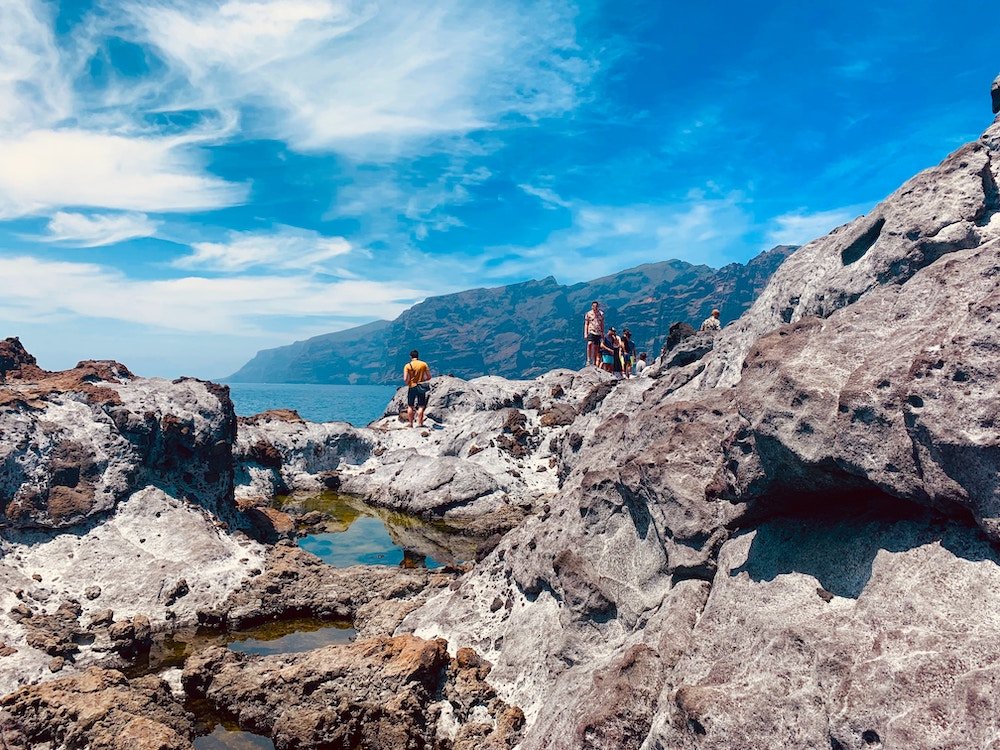
Nestled in the azure waters of the Atlantic Ocean, the Canary Islands stand as a captivating archipelago, luring travelers with their unique blend of natural beauty, cultural richness, and diverse landscapes.
The allure of these Spanish islands extends far beyond their geographical proximity to Africa, drawing in adventurers, sun-seekers, and culture enthusiasts from around the globe.
In this exploration of the Canary Islands, we embark on a journey to uncover the treasures of this archipelago, with a particular focus on the eight must-visit islands.
The Canary Islands, an autonomous community of Spain, are composed of seven main islands and several smaller ones, each boasting its own distinctive character.
Renowned for their volcanic origin, these islands present an otherworldly scenery where craggy cliffs, rolling sand dunes, and lush greenery coexist harmoniously.
As the volcanic landscapes shape the physical essence of the Canary Islands, they also contribute to the unique flora and fauna that thrive in this subtropical paradise.
For decades, the Canary Islands have held a prominent position on the world tourism map.
The archipelago’s popularity can be attributed to its year-round pleasant climate, making it an ideal destination for those seeking a sun-soaked escape in any season.
Whether you’re an avid hiker, a beach enthusiast, or a history buff, the Canary Islands cater to a spectrum of interests.
What sets the Canary Islands apart is the incredible diversity of attractions found on each island.
From the majestic volcanic peaks of Tenerife to the golden beaches of Fuerteventura and the lush greenery of La Palma, there’s something to captivate every traveler.
The archipelago is not just a singular destination but a tapestry of experiences waiting to be unraveled.
Join us as we delve into the distinct charms of Tenerife, Gran Canaria, Lanzarote, Fuerteventura, La Palma, La Gomera, El Hierro, and the tranquil haven of La Graciosa.
1. Tenerife: The Gem of the Canary Islands

As the largest and most populous island in the Canary archipelago, Tenerife reigns as the crowning jewel of this Atlantic paradise.
Its geographical features are a testament to the island’s volcanic origin, with the majestic Mount Teide standing as the highest peak in Spain and the third-largest volcano in the world.
The landscape is a captivating tapestry of contrasts, where rugged mountains seamlessly meet the sapphire waters of the Atlantic.
Popular Tourist Attractions
Teide National Park
A pilgrimage for nature enthusiasts, Teide National Park is a UNESCO World Heritage site that encapsulates the essence of Tenerife’s volcanic splendor.
The lunar-like landscapes, accentuated by the towering presence of Mount Teide, offer an unparalleled opportunity for exploration.
Visitors can ascend by cable car to the summit, where panoramic views of the island and beyond await.
Siam Park
For those seeking a thrilling aquatic adventure, Siam Park stands as one of the world’s top water parks.
This Thai-themed paradise boasts adrenaline-pumping water slides, a lazy river winding through a tropical oasis, and the iconic Wave Palace, where visitors can ride the surf amid lush surroundings.
Unique Cultural Experiences and Local Cuisine
Tenerife isn’t just a haven for nature lovers; it also holds a rich cultural tapestry waiting to be discovered.
The island’s historic capital, Santa Cruz de Tenerife, offers a blend of modernity and tradition.
Visitors can explore the Auditorio de Tenerife, an architectural masterpiece, and delve into the island’s history at the Museum of Nature and Man.
Local Cuisine
Tenerife’s culinary scene reflects its diverse influences, blending Spanish, African, and Latin American flavors.
Indulge in local delicacies such as “papas arrugadas” (wrinkled potatoes) with “mojo” sauce, fresh seafood, and the renowned “gofio” (toasted cornmeal) in various dishes.
The island’s vibrant markets, like La Recova in Santa Cruz, provide an authentic taste of Tenerife’s gastronomic offerings.
2. Gran Canaria: A Blend of Nature and Urban Life

Nestled in the heart of the Canary Islands, Gran Canaria unfolds as a mesmerizing canvas that seamlessly blends diverse landscapes and urban sophistication.
The island’s climate is a year-round invitation to explore its wonders, with warm temperatures and cooling ocean breezes.
Gran Canaria’s geographical diversity encompasses golden beaches, dramatic cliffs, and lush forests, creating a paradise for nature enthusiasts and city dwellers alike.
Natural Wonders
Dunes of Maspalomas
Among the most iconic natural wonders, the Dunes of Maspalomas stand as a testament to the island’s striking contrasts.
This vast expanse of golden sand dunes, sculpted by the trade winds, creates an ethereal landscape reminiscent of the Sahara.
Visitors can wander through this natural masterpiece, experiencing the interplay of light and shadow as the sun sets over the Atlantic.
Roque Nublo
A symbol of Gran Canaria’s volcanic heritage, Roque Nublo rises majestically as a monolith in the center of the island.
Hiking enthusiasts can embark on a journey to reach the summit, where panoramic views of Gran Canaria’s diverse terrain unfold.
The rugged beauty of Roque Nublo is not just a geological marvel but a spiritual and cultural icon for the islanders.
Exploration of Vibrant Cities and Cultural Sites
Gran Canaria is not only a haven for nature lovers but also a dynamic hub of urban life, boasting vibrant cities and rich cultural heritage.
Las Palmas de Gran Canaria
The capital city, Las Palmas de Gran Canaria, exudes a lively atmosphere where historic charm meets modern sophistication.
Explore the cobblestone streets of Vegueta, the old town, where colonial architecture and bustling markets coexist.
The Cathedral of Santa Ana and Casa de Colón offer glimpses into the island’s past.
Cultural Sites
Gran Canaria’s cultural richness extends beyond its capital.
The charming town of Teror, with its colonial architecture and the Basilica de Nuestra Señora del Pino, provides a spiritual retreat.
The Cueva de los Canarios, a pre-Hispanic archaeological site, offers a fascinating journey into the island’s ancient history.
3. Lanzarote: Moon-Like Landscapes and Artistic Vibes
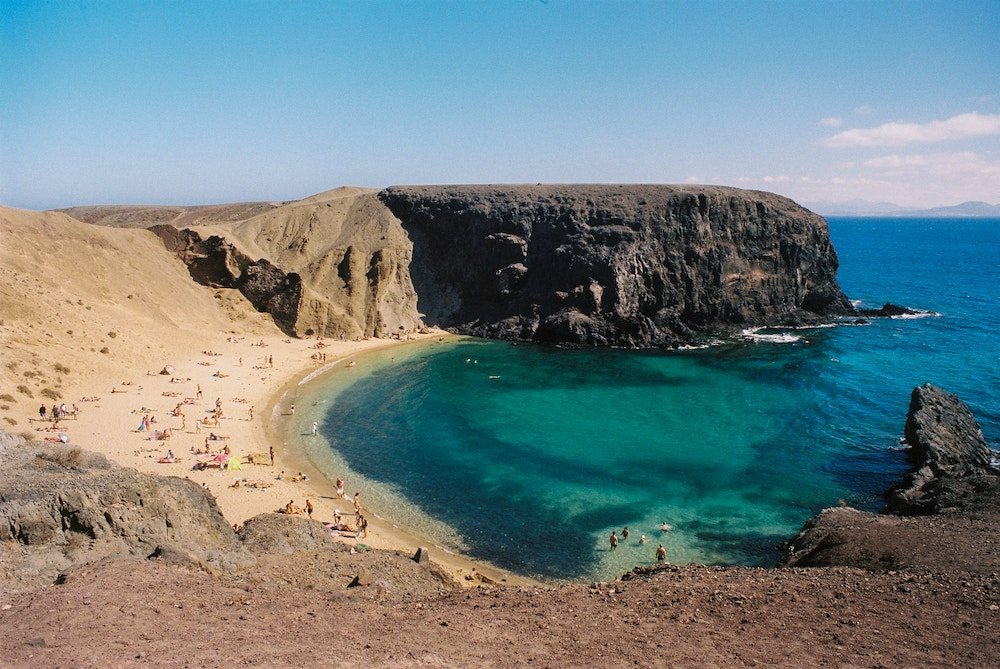
Lanzarote, a jewel in the Canary crown, is a testament to the raw beauty born from volcanic activity.
The island’s landscapes, often likened to a lunar terrain, are a captivating fusion of ancient craters, solidified lava fields, and dramatic coastlines.
The unique geology, shaped by eruptions dating back to the 18th century, has bestowed Lanzarote with an otherworldly allure that entices travelers seeking a distinctive natural experience.
César Manrique’s Influence on Art and Architecture
Central to Lanzarote’s charm is the artistic legacy of César Manrique, a visionary artist and architect.
His profound influence is woven into the fabric of the island, blending human creativity seamlessly with nature.
Manrique’s philosophy emphasized harmony between art, nature, and sustainable development, shaping Lanzarote into a living canvas.
Jameos del Agua
One of Manrique’s masterpieces, Jameos del Agua, is a subterranean world born from a volcanic tunnel.
Here, visitors descend into a surreal landscape, discovering a concert hall, a restaurant, and a natural lagoon teeming with unique blind albino crabs.
The harmonious integration of architecture with the natural environment is a testament to Manrique’s genius.
Mirador del Rio
Perched on the northern cliffs, Mirador del Rio offers breathtaking panoramic views of the neighboring island of La Graciosa.
This viewpoint, designed by Manrique, seamlessly integrates into the volcanic rock, providing an awe-inspiring vista that captures the essence of Lanzarote’s untamed beauty.
Unique Attractions: Timanfaya National Park
Timanfaya National Park
The crown jewel of Lanzarote’s volcanic wonders, Timanfaya National Park, is a living testament to the island’s tumultuous geological history.
Visitors embark on a guided tour through this eerie expanse, witnessing geysers shooting from the ground and feeling the residual heat emanating from the dormant volcanic landscape.
The “Fire Mountains,” as they are aptly named, paint a surreal tableau that underscores the raw power of nature.
4. Fuerteventura: The Beach Lover’s Paradise
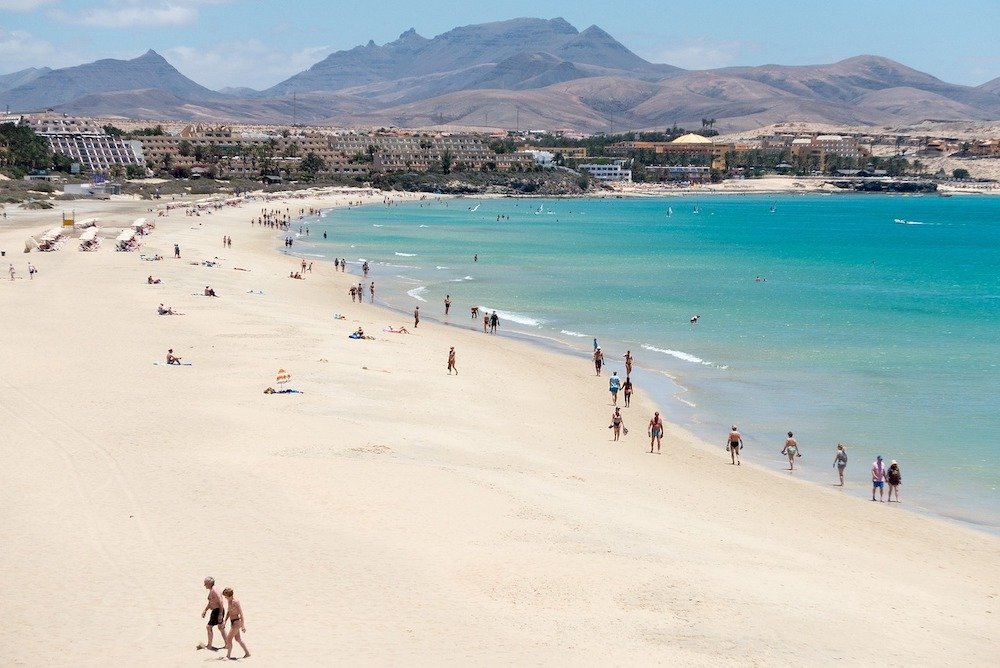
Fuerteventura, the second-largest of the Canary Islands, unfolds as a haven for beach lovers and water enthusiasts.
Renowned for its pristine stretches of golden sands and crystal-clear waters, Fuerteventura beckons travelers seeking sun-soaked relaxation and thrilling aquatic adventures.
With a climate that embraces perpetual summer, the island stands as an idyllic playground for those captivated by the beauty of the Atlantic coastline.
Spotlight on Corralejo Natural Park and the Dunes
Corralejo Natural Park
At the northern tip of Fuerteventura lies the mesmerizing Corralejo Natural Park, a vast expanse of dunes and crystalline waters.
The rolling sand dunes, shaped by the perpetual dance of the trade winds, create an ever-shifting landscape that is both enchanting and surreal.
As the sun sets over Corralejo, the dunes come alive with warm hues, providing a magical backdrop for an evening stroll along the coastline.
Water Sports and Relaxation Opportunities
Fuerteventura’s appeal extends beyond its stunning beaches to a world of water sports and leisure.
The island’s consistent trade winds make it a windsurfer’s paradise, attracting enthusiasts from around the globe to popular spots like Playa de Sotavento.
Kiteboarders also revel in the conditions offered by the island’s shores.
For those seeking a more tranquil experience, Fuerteventura offers secluded coves and bays, such as Playa de Cofete, where the rhythmic lull of the waves invites visitors to unwind.
The island’s beaches are not just a destination for water sports; they are sanctuaries of serenity, perfect for those looking to escape the hustle and bustle of everyday life.
5. La Palma: The Greenest of the Canary Islands
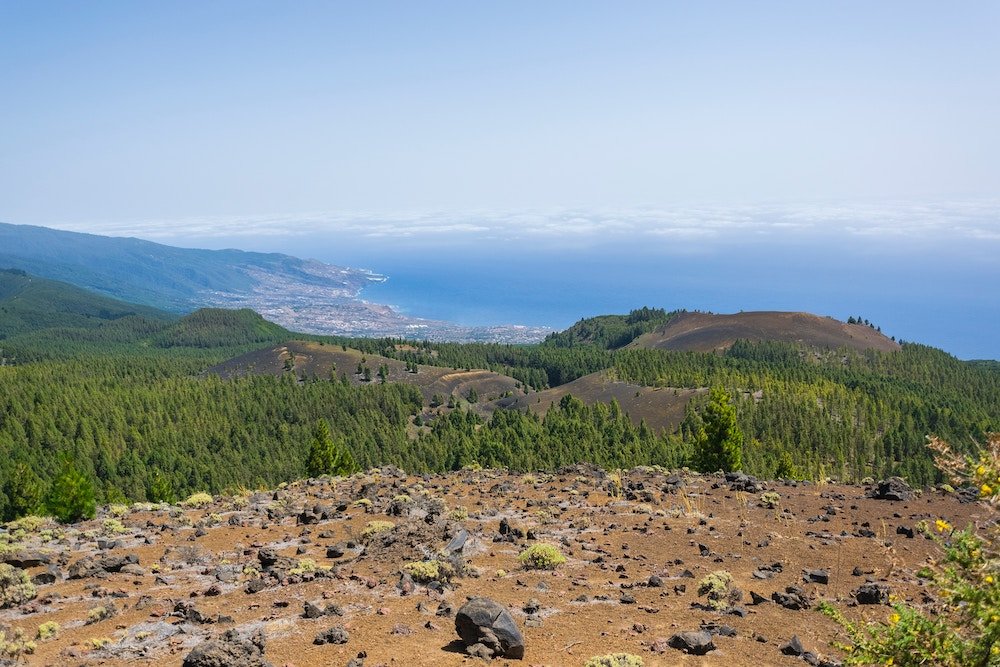
La Palma, often referred to as “La Isla Bonita,” stands as the green oasis of the Canary Islands, boasting lush landscapes that earn it the title of the “Green Island.”
Unlike its volcanic counterparts, La Palma is a verdant tapestry of dense forests, deep ravines, and cascading waterfalls.
The island’s diverse microclimates nurture an abundance of flora, creating an enchanting haven for nature lovers and hikers.
Exploration of Caldera de Taburiente National Park
Caldera de Taburiente National Park
At the heart of La Palma lies the spectacular Caldera de Taburiente, a colossal caldera that has sculpted the island’s central landscape.
The park, a UNESCO Biosphere Reserve, is a sanctuary of biodiversity, featuring endemic species and a rich array of plant life.
Hikers can explore the network of trails that lead to panoramic viewpoints, revealing the breathtaking expanse of the caldera and its lush surroundings.
Stargazing Opportunities Due to the Island’s Dark Sky Reserves
Beyond its terrestrial beauty, La Palma is celebrated for its celestial wonders, thanks to its designation as a UNESCO Starlight Reserve.
The island’s commitment to preserving its pristine night skies has made it a premier destination for stargazing.
The Roque de los Muchachos Observatory, perched at the summit of the island, offers an unrivaled vantage point for observing the cosmos.
Visitors can embark on guided stargazing tours, immersing themselves in the brilliance of a sky unmarred by light pollution.
6. La Gomera: A Hiker’s Haven and Whistling Language

Nestled between Tenerife and La Palma, La Gomera beckons to those seeking an intimate encounter with unspoiled nature.
This compact island, with its rugged terrain and lush landscapes, is a haven for hikers and adventurers.
La Gomera’s trails wind through ancient laurel forests, dramatic cliffs, and terraced valleys, offering a diverse tapestry of environments waiting to be explored.
Hiking enthusiasts will find solace in the island’s well-maintained paths, such as the Garajonay National Park trails, which lead to the island’s highest peak, Alto de Garajonay.
The panoramic views from this vantage point showcase the island’s rich biodiversity, making it a must-visit destination for nature lovers.
Discussion of the Unique Whistling Language, Silbo Gomero
Silbo Gomero
Adding to the allure of La Gomera is its unique cultural heritage embodied in Silbo Gomero, a traditional whistling language that has been recognized by UNESCO.
Developed by the indigenous Guanche people and later adapted by the inhabitants of La Gomera, Silbo Gomero is a form of communication used across the island’s deep ravines and valleys.
Whistlers articulate syllables and words through a series of distinctive whistles, allowing messages to travel across long distances, even through dense forests and challenging terrain.
Cultural and Historical Highlights
Beyond its natural wonders, La Gomera boasts a rich cultural and historical tapestry waiting to be uncovered.
San Sebastián de la Gomera, the island’s capital, is a charming town steeped in history.
Explore the Torre del Conde, a medieval fortress with ties to Christopher Columbus, or stroll through the picturesque streets of La Calle Real, lined with colonial-style buildings and vibrant cafes.
For a deeper immersion into the island’s history, visitors can explore the Ethnographic Park of La Gomera, where traditional Canarian architecture and agricultural practices are preserved, offering insight into the island’s past.
7. El Hierro: The Hidden Gem with Sustainable Tourism

El Hierro, the smallest and least-visited of the Canary Islands, stands as a testament to the power of sustainable tourism.
Embracing the ethos of responsible travel, El Hierro has become a model for environmental stewardship and conservation.
As the first island in the world to be energy self-sufficient through renewable sources, El Hierro is not just a destination; it’s a beacon of sustainability in the travel industry.
Emphasis on the Island’s Ecological Initiatives and UNESCO Biosphere Reserve Status
Ecological Initiatives
El Hierro’s commitment to sustainable living is evident in its pioneering ecological initiatives.
The island harnesses wind and hydroelectric power, minimizing its carbon footprint and preserving its pristine landscapes.
Visitors can witness these initiatives firsthand, whether exploring the island’s wind farms or learning about its innovative waste management practices.
UNESCO Biosphere Reserve
El Hierro’s dedication to environmental preservation is further underscored by its UNESCO Biosphere Reserve status.
This recognition acknowledges the island’s efforts to balance biodiversity conservation, sustainable development, and community involvement.
The lush forests of El Hierro, home to unique flora and fauna, serve as living proof of the island’s commitment to maintaining its natural heritage.
Exploration of Natural Attractions and Off-the-Beaten-Path Experiences
El Hierro’s unspoiled landscapes offer a wealth of natural attractions for those willing to venture off the beaten path.
From dense forests and rugged coastlines to volcanic craters and clear waters, the island presents a tapestry of experiences for nature enthusiasts.
El Sabinar
The ancient forest of El Sabinar, with its twisted and gnarled juniper trees, stands as a living testament to El Hierro’s ecological resilience.
A walk through this mystical forest feels like stepping into a fairy tale, with the aroma of juniper filling the air.
La Restinga
For those seeking underwater wonders, the coastal village of La Restinga offers a unique diving experience.
The crystal-clear waters surrounding El Hierro teem with marine life, providing a captivating glimpse into the island’s vibrant underwater world.
El Hierro, often overlooked in favor of its larger counterparts, unfolds as a hidden gem for travelers seeking an authentic and sustainable escape.
From its innovative environmental practices to the untouched beauty of its natural attractions, El Hierro invites visitors to embrace a different kind of Canary Islands experience—one that harmonizes with the environment and leaves a minimal footprint.
8. La Graciosa: The Smallest and Most Secluded Island
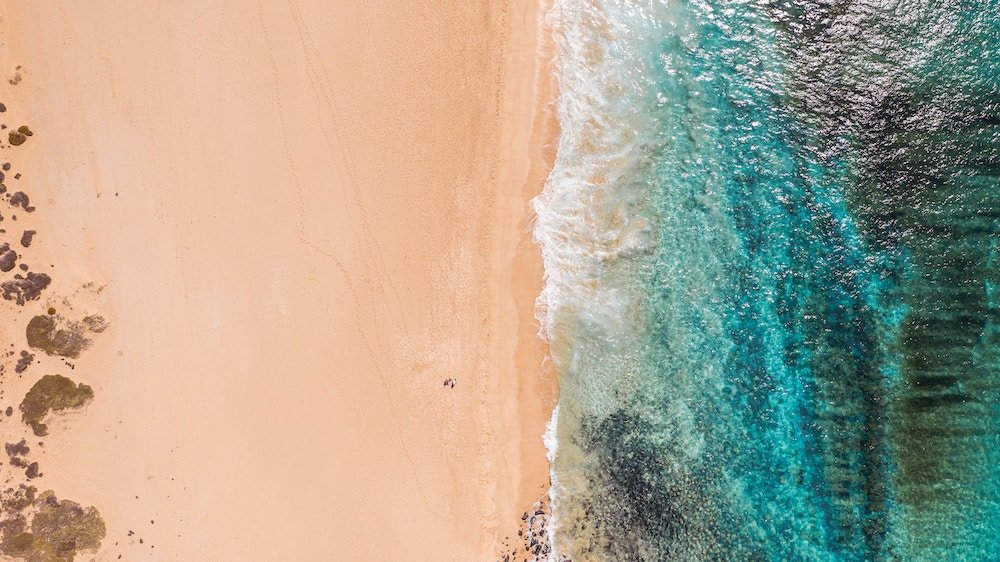
Nestled on the northern fringes of the Canary archipelago, La Graciosa emerges as a tranquil haven, earning the title of the smallest inhabited island in the archipelago.
Discreetly positioned off the coast of Lanzarote, this serene retreat stands as a testament to the beauty found in simplicity and seclusion.
Pristine Beaches and Tranquility
Playa de las Conchas
La Graciosa is renowned for its untouched and pristine beaches, where the gentle lull of the Atlantic whispers tranquility.
Playa de las Conchas, with its ivory sands and crystalline waters, exemplifies the unspoiled beauty that defines the island.
The absence of mass tourism allows visitors to savor the serenity of these coastal gems in relative isolation.
Montaña Amarilla
The island’s landscape is dominated by Montaña Amarilla, a volcanic cone that adds to the enchanting allure of La Graciosa.
A hike to the summit rewards travelers with panoramic views of the surrounding seascape, accentuating the sense of peaceful seclusion that defines the island.
Activities and Attractions for a Peaceful Retreat
La Graciosa, with its unhurried pace and natural beauty, offers a variety of activities and attractions for those seeking a peaceful retreat.
Snorkeling in the Clear Waters
The clear waters surrounding La Graciosa beckon snorkelers to explore vibrant underwater ecosystems.
With an abundance of marine life and hidden coves, the island’s shores provide a tranquil sanctuary for underwater exploration.
Cycling Across the Landscape
The absence of paved roads enhances the island’s tranquility, making it an ideal destination for cycling enthusiasts.
Rent a bike and leisurely explore the winding paths that crisscross La Graciosa, allowing the natural beauty to unfold at a pace dictated by the gentle breeze.
Relaxing in Caleta de Sebo
The charming village of Caleta de Sebo serves as the island’s hub, where whitewashed houses and cobblestone streets invite leisurely strolls.
Embrace the unhurried atmosphere as you savor fresh seafood at seaside restaurants, basking in the simplicity that defines life on La Graciosa.
La Graciosa, the smallest and most secluded island in the Canary archipelago, offers a haven for those yearning for a tranquil escape.
Conclusion
In the cradle of the Atlantic Ocean, the Canary Islands beckon with an enchanting symphony of landscapes, cultural treasures, and natural wonders across Tenerife, Gran Canaria, Lanzarote, Fuerteventura, La Palma, La Gomera, El Hierro, and La Graciosa.
From the volcanic majesty of Mount Teide and the lunar-like landscapes of Lanzarote to the pristine beaches of Fuerteventura and the ecological marvels of El Hierro, each island boasts a unique charm.
As travelers traverse the archipelago, they encounter the sustainable practices of El Hierro, the whistling language of La Gomera, and the secluded tranquility of La Graciosa.
Whether basking in the glow of Gran Canaria’s Dunes of Maspalomas or gazing at the stars in La Palma’s UNESCO Biosphere Reserve, the Canary Islands offer a kaleidoscope of experiences.
This diverse set of islands invites exploration, beckoning readers to plan their escape to this extraordinary paradise, where each island unfolds a chapter of discovery, adventure, and cultural richness that defines the unique allure of the Canary Islands.
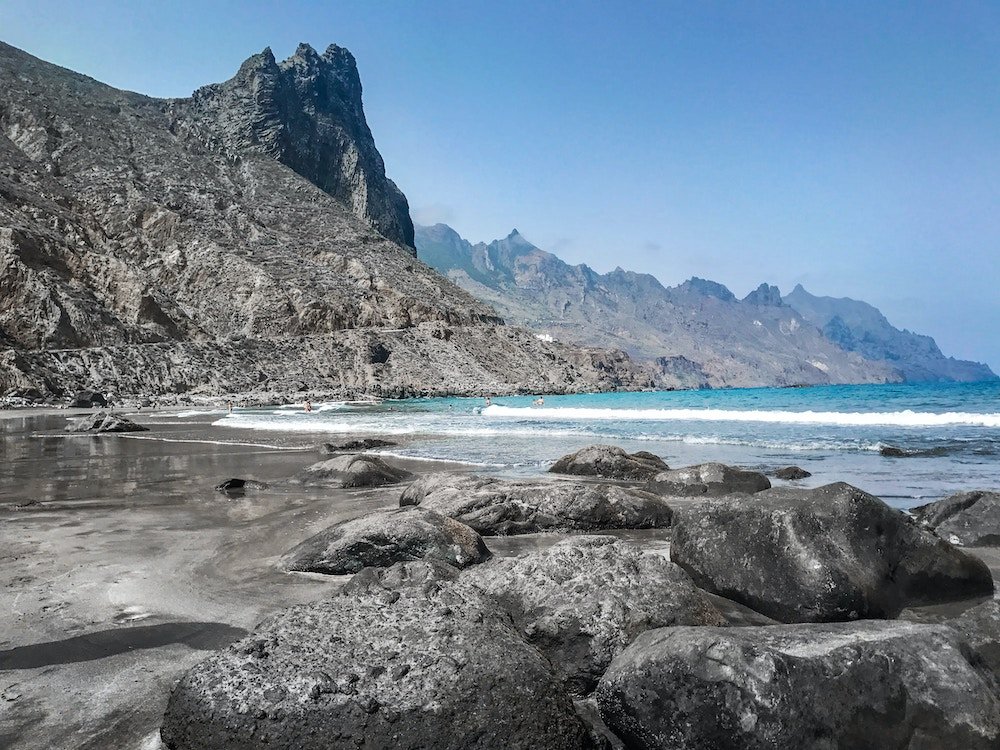
FAQ’s About the Canary Islands
What is so special about the Canary Islands?
The Canary Islands are renowned for their diverse and stunning natural landscapes. From the volcanic peaks of Mount Teide in Tenerife to the pristine beaches of Fuerteventura, each island offers a unique blend of scenery.
The archipelago is also known for its pleasant climate, making it a year-round destination.
Additionally, the cultural richness, including traditional festivals, unique cuisine, and indigenous practices such as Silbo Gomero on La Gomera, adds to the islands’ distinctive charm.
Are the Canary Islands expensive to visit?
The cost of visiting the Canary Islands can vary depending on factors such as the island chosen, the time of year, and personal preferences.
While some aspects, like accommodation and dining, may be more affordable than in certain mainland European destinations, others, such as tourist activities, can be relatively expensive.
Travelers can find options that cater to different budgets, and overall, the Canary Islands offer a range of choices for both budget-conscious and luxury travelers.
Are the Canary Islands very touristy?
The level of tourism varies across the Canary Islands.
Tenerife and Gran Canaria, being larger and more developed, tend to attract a higher number of tourists.
However, the archipelago also includes smaller and less-visited islands like La Gomera, El Hierro, and La Graciosa, offering a more tranquil and secluded experience.
Travelers can choose the level of tourist activity that suits their preferences, whether seeking vibrant nightlife and bustling markets or quiet beaches and nature retreats.
Do they speak English in the Canary Islands?
English is widely spoken in the Canary Islands, especially in tourist areas and establishments.
As a popular destination for international visitors, locals in the tourism industry are accustomed to communicating in English.
However, while many people speak English, especially in the hospitality sector, it can be helpful to know some basic Spanish phrases, especially when venturing into more remote or local areas.
What is the most beautiful Canary Island?
Determining the “most beautiful” Canary Island is subjective and depends on personal preferences. Each island has its own unique charm.
Tenerife is often praised for the diversity of landscapes, including Mount Teide and the Anaga Rural Park.
La Palma is known for its lush greenery, while Fuerteventura boasts pristine beaches.
It ultimately depends on whether you prefer volcanic landscapes, dense forests, sandy shores, or a mix of these elements. Each island has its own beauty waiting to be discovered.
